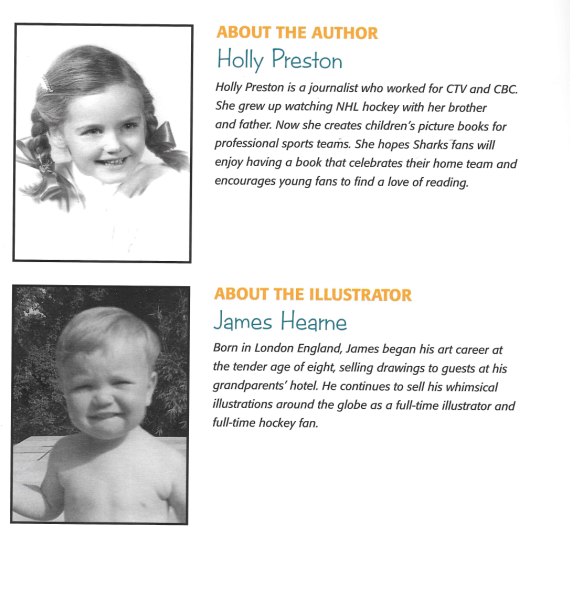Blog Archives
How the Land of the Rising Sun became Sharks Territory for a 1998 weekend
“It’s fucking ridiculous,” said then San Jose Sharks center Bernie Nicholls in an Oct. 1998 interview with Tony Cooper of the San Francisco Chronicle. “Two NHL teams playing in Japan, why are we going over there? It’s not fair to the organizations. My question is why?”
CREATION OF NHL GAME ONE
At a press conference in Vancouver, British Columbia, on March 26, 1997, NHL commissioner Gary Bettman announced the Vancouver Canucks and the then Mighty Ducks of Anaheim would open the 1997-98 NHL regular season with a two game set at Yoyogi Arena in Tokyo, Japan.
The games, which were the first regular season games to be played outside of North America, were part of the league’s Game ONe enterprise to increase exposure of the NHL brand and give the Japanese fans a preview of what they could expect at the 1998 Winter Olympics in Nagano, Japan, which would feature participation from active NHL players for the first time ever.
After the tremendous success of Game ONe ’97, Bettman announced at the tail end of the Nagano Winter Olympics that the NHL would return to Japan to open the 1998-99 regular season. The two teams selected to particiapte in the two-game set were the Sharks and the Calgary Flames.
REACTION IN SAN JOSE
The league’s selection of the Sharks and Flames for Game ONe ’98 caught many in the hockey realm by surprise. The Mighty Ducks and Canucks were logical choices for Game ONe ’97 with then Anaheim superstar Paul Kariya being of Japanese decent and Vancouver being a legitimate Pacific Rim city.
But the Sharks and Flames? The only history these two teams had with each other at the time was their epic seven game series in the first round of the 1995 Stanley Cup Playoffs, which saw the eighth seeded Sharks eliminate the top seeded Flames in double overtime of game seven in Calgary.
Perhaps the league was interested in a brother versus brother showdown as Darryl Sutter was the head coach of the Sharks at the time and Brian Sutter was the coach of the Flames? Whatever the league’s reasons were, it was a decision that some within the Sharks organization, specifically Darryl and Nicholls, weren’t happy about and both made their feelings well known as opening day approached.
Darryl, who played the 1978-79 season with Iwakura Tomakomi of the Japan league and led the league in scoring with 41 points (28-13-41), was told by then Sharks owner George Gund III to scale back his public comments regarding his displeasure of going overseas for the two games after Gund received a phone call from someone high up on the NHL’s executive chain ordering him to do so.
“We logged the second-most miles in the league last season (1997-98), said a pedestrian Darryl to Cooper. “So, I suppose, what’s another 5,000 miles?”
While Darryl toned down his public comments, Nicholls turned up the volume in voicing his frustration with the league sending the Sharks and Flames overseas.
“I’m all for promoting the game by going to cities in the Untied States or Canada that are going to have a team,” said Nicholls to Cooper. “Is (commissioner Gary) Bettman going to Japan? I don’t think so.
“I can’t wait until New York or New Jersey has to go. To me, it’s another stupid thing Bettman has come up with. I wish someone would tell me why we’re doing this. We travel more than any team in the league and we’re traveling some more. If it was a four or five hour trip, I’d have no problem. I have no problem with the country or anything. We’re not going over there sightseeing — we’re going to work. I just don’t understand why we’re doing this.”
THE LAND OF THE RISING SUN
 After participating in a cultural sensitivity class, the Sharks left for Tokyo on Oct. 6, 1998. Once there, the Sharks began their ambassadorial duties, which they took very seriously in the wake of Team USA hockey members thrashing their rooms at the Olympic Village after being eliminated at the Nagano Olympics eight months prior.
After participating in a cultural sensitivity class, the Sharks left for Tokyo on Oct. 6, 1998. Once there, the Sharks began their ambassadorial duties, which they took very seriously in the wake of Team USA hockey members thrashing their rooms at the Olympic Village after being eliminated at the Nagano Olympics eight months prior.
Some of those duties saw Sharks forwards Patrick Marleau and Joe Murphy conduct a hockey clinic for Japanese kids; goaltender Mike Vernon donned a Japanese robe and helped break open a ceremonial barrel of sake at a reception inside a hotel banquet room; forward Mike Ricci and defenseman Bryan Marchment were also asked to wear robes at the same reception as well as bang on Taiko drums.
In addition to their goodwill gestures, some of the Sharks players got a chance to experience the local culture. In the Roppongi district, forward Marco Sturm and defensemen Scott Hannan and Andy Sutton each received a massage that consisted of the masseuse walking on their backs and legs for an hour.
At the conclusion of their Thursday afternoon practice, Nicholls, Murphy and fellow forward Shawn Burr took a taxi to a sushi parlor where each ordered the house special. While the food was good, the bill wasn’t as it came out to 66,000 yen, which translated into near five hundred dollars at the time.
FINAL PREPERATIONS
Once their acts of diplomacy and sightseeing adventures were done, the Sharks were ready for the first game of their two game set against the Flames at Yoyogi Arena. However, the Sharks squad that was prepared to take the ice wasn’t the team many fans (home and abroad) had expected to see.
While then Sharks General Manager Dean Lombardi was able to sign two of the Sharks’ restricted free agents in Ricci and defenseman Mike Rathje before the team headed overseas, Lombardi was unable to sign the Sharks’ biggest offensive weapons in restricted free agent forwards Owen Nolan and Jeff Friesen.
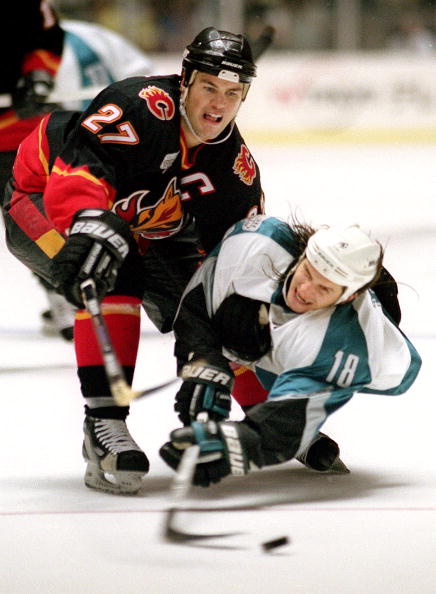 In addition, the Sharks were without defensemen Marcus Ragnarsson, who suffered a broken left thumb via a slash in the final preseason game, and Gary Suter, who was recovering from triceps surgery. To top it all off, visa issues kept defenseman Andre Zyuzin from joining the team until late Friday afternoon Japan time, half a day before the opening game.
In addition, the Sharks were without defensemen Marcus Ragnarsson, who suffered a broken left thumb via a slash in the final preseason game, and Gary Suter, who was recovering from triceps surgery. To top it all off, visa issues kept defenseman Andre Zyuzin from joining the team until late Friday afternoon Japan time, half a day before the opening game.
Going into the two game set with a makeshift squad seemed appropriate for the Sharks as Yoyogi Arena, which hosted Game ONe ’97 and the swimming competitions at the 1964 Olympics, had a makeshift rink with horrible ice conditions. In fact, one end of the rink had a diving board hanging over it as a swimming pool was underneath the rink.
It was on that rink during Game ONe ’97 that Canucks forward Mark Messier suffered a groin injury that hampered him all of the 1997-98 season. In response, the NHL flew in a temporary refrigeration system for the Game ONe ’98 series but a combination of outside warm air, the humid atmosphere of the arena itself and thick air inside made the ice surface sloppy and dangerous to play on.
“Godawful ice” is how coach Darryl Sutter described the rink and playing conditions to Mark Purdy of the Mercury News after the first game of the set. “But when it’s like that, you’ve just got be simple and stupid.”
HOCKEY AFTERNOONS IN TOKYO
On a beautiful sunny Saturday afternoon (Oct. 9, 1998), which was Friday night back in San Jose, the Sharks and Flames took the ice for the first game of their two game set. Though it wasn’t a sellout crowd (Yoyogi Arena holds 10,000 people), the Sharks and Flames put on an exciting game in front of the announced 8,400 fans in attendance, which included near 500 Sharks fans who made the trip from Northern California and made Yoyogi Arena feel like the Shark Tank with traditional Sharks cheers, chants and chomps.
Murphy put the Sharks ahead 1-0 when he buried home the rebound of Sturm’s shot from the right circle for a late first period power play goal. However, the Sharks’ lead only lasted 26-seconds as the Flames answered right back when forward Jason Wiemer finished off a two-on-two rush with linemate Dave Roche.
The Flames went ahead 2-1 at 7:03 of the second period when forward Valeri Bure swiped the puck from Marchment, who was positioned near the front of his own net, and beat Vernon over the shoulder with a quick snap shot.
In the third period, the Sharks tied the game at 6:14 when they got a goal from an unlikely candidate in Rathje, who had just three goals in 81 games the season prior. With the puck on top of the left circle, Rathje fired a shot that hit one of the Flames players in front, then bounced off the skate of another Flames player before beating Flames goaltender Ken Wregget.
 As was the case when the Sharks scored in the first period, the Flames answered right back, this time two-and-a-half minutes later, when forward Andrew Cassels curled around from behind the net and beat Vernon for the go-ahead goal at 9:44, one second after the penalty to Sharks defenseman Bill Houlder expired.
As was the case when the Sharks scored in the first period, the Flames answered right back, this time two-and-a-half minutes later, when forward Andrew Cassels curled around from behind the net and beat Vernon for the go-ahead goal at 9:44, one second after the penalty to Sharks defenseman Bill Houlder expired.
Just as it appeared the Sharks were going to open the season with a loss, Ricci corralled a pass out of the corner from linemate Stéphane Matteau and beat Wregget with a shot from the faceoff circle at 17:42 for the tying goal that forced overtime.
In the extra session, Flames forward Theo Fleury had the Flames’ best chance to win the game on a point blank chance with 30-seconds left but was stopped by Vernon, who finished with 27 saves, 16 of which came in the third period and overtime, and had to endure several pileups in front of his goal crease.
“Have you been in the subway system here?” asked Vernon post game to Purdy. “That’s the way it was in there, with people running all over you.”
Despite bad ice and a makeshift lineup, the Sharks were able to grab one point as the result of strong play from Vernon, Murphy, Ricci, who had a goal and an assist, and Hannan, who dished out two assists in his first career NHL game.
The next day (Oct. 10, 1998), Hockey Night in Canada joined the second game in progress, which saw Fleury register a five point game with a hat trick in a 5-3 Flames win. In addition, the game marked the last NHL game in the career of current Sharks television color commentator Jamie Baker, who registered an assist for the Sharks in the loss.
“I don’t think we played well enough to win this game,” said Ricci post game to Purdy. “No offense to anyone, but obviously this trip wasn’t the best situation and it’s definitely been a disappointment.”
“It was a pain in the ass, a waste of time,” said Sharks head coach Darryl Sutter of the Tokyo trip to Purdy after the game two loss. “Even the league has addressed that. First they said they would be coming here every year for the next 20 years. Now they say it will be maybe every other year. So basically what they’re saying is, forget about it.”
PHOTO CREDIT
APimages
Calgary Flames Hockey Club
GettyImages
Oocities
San Jose Sharks children’s picture book makes the perfect holiday gift
While standing in line inside the Sharks Store at SAP Center last night, something on the checkout counter shelf caught my attention. As I walked up to the cashier, I noticed the item in question was a San Jose Sharks children’s picture book called “The Home Team” written by Holly Preston and illustrated by James Hearne.
As I browsed through the book, I was blown away by the attention to detail in the illustration work by Mr. Hearne. In addition, the story written by Ms. Preston is one that people of all ages can relate to and enjoy.
Being a big kid at heart (and a huge Sharks fan), I put the book on the counter and said, “I’ll get this too.” The cashier lady said smilingly, “Awesome. It’s a cool book and good read for everyone.”
The book sells for $20 at the Sharks Store or you can call the store at (408) 999-6810 to order the book and have it sent to you.
As a holiday bonus, here is the book in scan form
My day at Sharks Fan Fest 2014
On Sept. 27, my brother and I were lucky enough to attend the San Jose Sharks‘ inaugural Fan Fest event, which was held at the Shark Tank (aka SAP Center) from 9 a.m. to 1:30 p.m. as the Sharks had a preseason home game that night against the Anaheim Ducks.
Having attended the Sharks’ home game the night prior against the Arizona Coyotes, my brother and I stayed the night at Hotel De Anza, which is just down the street (0.4 miles) from the Shark Tank and gave us no excuse to be late to the event.
Upon entering the Tank through the South Entrance, we were handed our complimentary home schedule posters and then made our way up the stairs to watch the Sharks team practice. Having never seen a Sharks practice live before, this was a new and cool experience for me. One drill that stood out to me was the players having to skate around a milk crate with a hockey stick propped up on each side and fire a shot on goal in one motion. In addition, I enjoyed watching the odd man rush drills (offense skated in 2-on-1 and the second defender had to catch up) as well as hearing associate coach Larry Robinson conduct the face-off drill. The highlight of practice though was watching Brent Burns during the shootout drill as he always had a comment and smile after every move attempt.
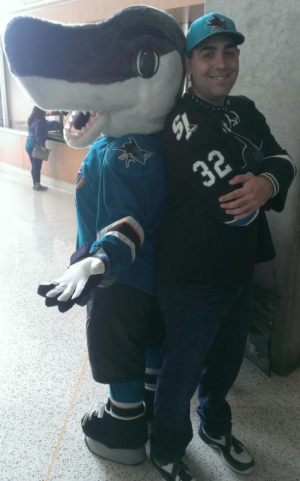 Once practice concluded at 10 a.m., my brother and I headed up to the concourse and noticed a huge line had formed near the stairs that led to tables where I’ve seen fans eat during game night. As we walked closer to the line, we saw a sign that read “Autograph Session 2” but it didn’t say which players were signing.
Once practice concluded at 10 a.m., my brother and I headed up to the concourse and noticed a huge line had formed near the stairs that led to tables where I’ve seen fans eat during game night. As we walked closer to the line, we saw a sign that read “Autograph Session 2” but it didn’t say which players were signing.
Not wanting to wait in line that long not knowing who we were going to see, we continued walking around the concourse and found S.J. Sharkie near the North Entrance taking photos with fans whom had gathered around. It was worth the wait to get a picture with Sharkie as he made each picture unique and memorable by doing something silly that made everyone around and in the picture smile.
After getting our individual pictures with Sharkie, my brother and I continued our walk around the concourse and noticed a second long line had formed for the “Autograph Session 1” but again, no names were listed as to who would be signing. Eventually, we were back standing in front of section 201 and noticed a third long line slightly to our right that was for the Shark Head photo. Realizing this was a rare opportunity, we immediately jumped in line around 10:35 a.m. and watched the line grow longer and longer behind us.
For the first 25-30 minutes, the line hardly moved. In fact, a female usher walked by several times and said the line was going to be cut off at 1:00 pm and that it was up to us if we wanted to take the chance of staying in line without getting a picture in front of the Shark Head. With as slow as the line had moved, that possibility seemed like a true reality. However, something unexpected happened around 11 a.m. and that was the line began moving at a consistent and rapid pace. By 11:20 a.m, we were making our way down the aisle stairs towards the Shark Head and the excitement kicked in again.
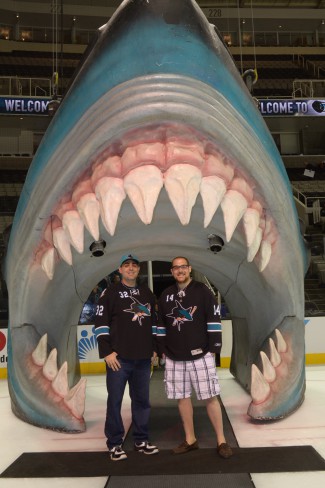 I never realized how big the Shark Head truly is until I was standing right in front of it. As we walked onto the mat laid out on the ice, I looked around the inside of the Shark Head in awe as this was truly an unbelievable experience. Once through, the staff photographers took our photo in front of the Shark Head and handed us the card so we could retrieve our picture off the website.
I never realized how big the Shark Head truly is until I was standing right in front of it. As we walked onto the mat laid out on the ice, I looked around the inside of the Shark Head in awe as this was truly an unbelievable experience. Once through, the staff photographers took our photo in front of the Shark Head and handed us the card so we could retrieve our picture off the website.
After heading back up to the concourse, my brother and I agreed we made the right decision to get our picture in front of the Shark Head instead of waiting in line for the autograph sessions, especially after we found out pictures couldn’t be taken with players, which was what I was hoping to do.
At 11:45 a.m., we made our way outside to the Kids Zone on the side street, where we each got an individual picture on the Zamboni and I won a Sharkie Reverse-A-Pal by answering a trivia question while waiting in line to do the shootout booth.
The question asked was what is the height of new Sharks enforcer John Scott? My hand immediately shot up because I am the same height as Scott, which is 6’8″. However, the DJ conducting the trivia contest spotted another person first and called him up to his stage. Luckily for me, the gentleman gave an incorrect answer by saying Scott is 6’3″. My hand shot up again and this time the DJ spotted me, called me up and was in awe of my height. After I gave the correct answer of 6’8″, the DJ got off the stage to compare his height to mine and said, “Wow. (John) Scott is going to be huge and near seven feet tall on skates.” The DJ then proceeded to grab my jersey for a mock fight and threw mock punches that didn’t even reach my mouth, which gave the crowd a good laugh.
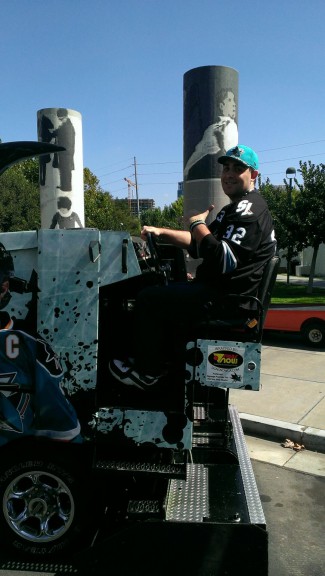 Once back in line for the shootout booth, my brother actually had to pull my arm down because I raised it again to answer the next trivia question of what former Sharks defenseman use to wear number 27, which of course was Bryan Marchment.
Once back in line for the shootout booth, my brother actually had to pull my arm down because I raised it again to answer the next trivia question of what former Sharks defenseman use to wear number 27, which of course was Bryan Marchment.
At the shootout booth, I got a few “ooooo” and “aaaahhhh” from the crowd when I scored back-to-back goals going top shelf in the left corner. I have no clue how I did that but I would like to attribute it to my 20-plus years of hockey video game playing on Nintendo, Sega Genesis, Playstation, Nintendo 64, Playstation 2 and Xbox 360.
As we left the shootout booth, we headed backed to Hotel De Anzal to checkout, which brought an end to our Sharktastic weekend as we couldn’t stay for the game later in the evening.
While Fan Fest was fun, there is always room for improvement and I have a few suggestions that hopefully the Sharks organization will implement for the 2015 Fan Fest event:
- Make Fan Fest a two day weekend (or extend the hours for the day) when no games are scheduled so fans can experience everything there is to offer and not feel rushed.
- Use all of SAP Center by having Sharks players (current and alumni) spread out at various booths so fans can line up for pictures and autographs.
- Have an available itinerary online a week or two before the event that lists who will be there and what time they will be doing signings/pictures so fans can plan out who they would like to see and at what times.
- Have a booth set up where fans can sit down with Randy Hahn or Dan Rusanowsky to do commentary on a classic Sharks clip and have the audio recorded so fans have a lifetime memory.
- Mic up the Q&A sessions to the arena speakers so everyone inside SAP Center can hear what is being said as they wait in line.
- Use the ice level as the organization did with the old Sharks Fest back in 2002 when they had Owen Nolan in a dunk tank; Drew Remenda hosting a trivia contest at center ice with Sharks players; and meet and greets with players down on ice level if they weren’t at a booth.
In remembrance of San Jose Sharks prospect Daniil Sobchenko
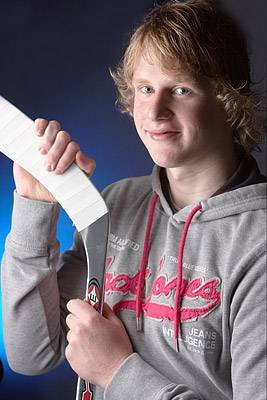 As I awoke on the morning of Sept. 7, 2011, I reached for my phone to see what was new on my Twitter timeline. At the top of my timeline were tweets about a plane crash involving an entire hockey team. Immediately, I grabbed the remote and turned the television on to ESPN, whom had images of a plane crash with a “Breaking News” graphic.
As I awoke on the morning of Sept. 7, 2011, I reached for my phone to see what was new on my Twitter timeline. At the top of my timeline were tweets about a plane crash involving an entire hockey team. Immediately, I grabbed the remote and turned the television on to ESPN, whom had images of a plane crash with a “Breaking News” graphic.
Within seconds of having the television on ESPN, I heard the SportsCenter anchor say, “In case you’re just joining us, a Russian jet carrying the Yaroslavl Lokomotiv hockey team of the Kontinental Hockey League (KHL) has crashed, killing 43 on board.” After hearing and seeing what had happened, I said out loud, “Yaroslavl Lokomotiv?… Isn’t that the team San Jose Sharks draftee Daniil Sobchenko plays for?”
GROWING UP
Born in Kyiv on April 13, 1991, Sobchenko began playing hockey by accident when at age six, his father (and first coach) Yevgeny Sobchenko asked him if he wanted to come along as he was going to play hockey with friends, to which Daniil replied, “of course, let’s go!”
Under the guidance of his father, Daniil was enrolled at the Sokil Kyiv‘s hockey school and competed against older children while playing for the local youth teams “Icicle”, “Falcon” and “Orbit”. At age 10, Daniil, who modeled his game after his hockey hero Sergei Fedorov, finished as the leading scorer in a youth tournament and his hockey talents were noticed by Yaroslavl.
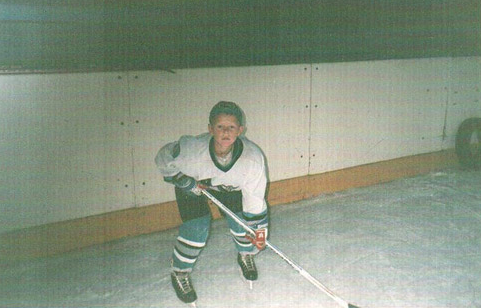
“Immediately, they called me at home and invited me to play in Yaroslavl,” said Daniil in a 2010 interview with Alessandro Seren Rosso for sports-planet.ru. “But my parents told me I had to stay home for another year.”
A year later, Daniil was asked by Spartak-90 to attend their July training camp in Moscow. A few days later, Daniil received a call from Yaroslavl and was asked to tryout for their 91-team. Having to make a tough choice, Daniil said goodbye to his childhood and hello to adulthood as he decided to go play for Lokomotiv due to a couple of coaches being there from Kyiv and not having many options for hockey in his hometown.
“At first, it was a bit hard, but then I got use to everything and everything was alright,” said Daniil.
Joining Lokomotiv-1991 in 2002 as a fifth grader, Daniil helped the team win multiple silver and bronze medals in various tournaments throughout Russia over the next five years. Not only was Daniil excelling on the ice, he was also excelling academically by showing the same commitment to his grades as he did his hockey game, evident by him sitting in the front of row of classes and rigorously studying, even when having break time.
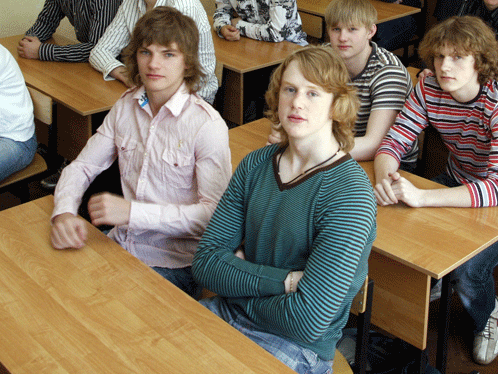
“From the outset, Daniil set a goal – to achieve great results,” said Yaroslavl school number 9 sports class headmistress Elvira Ozimova in a Sept. 2011 interview with Michael Kontuev and Elena Zaitseva for the Yaroslavl Komsomolskaya Pravda website.
Though Daniil did get into a fight at school that went on the record, it was that moment that caused Daniil to realize he had to behave more reasonable in difficult situations. “Daniil could fight but he wasn’t a bully,” said Ozimova. “He, as a man, knew how to stand up for himself and for loved ones.”
Not afraid to take a leadership role on the team and speak up when something needed to be said, Daniil showed the same leadership inside the classroom by making a simple comment to quiet classmates if they were distracting the class by talking or acting up.
Confident knowing he was following his life goal, Daniil was ready to embark on the next chapter of his hockey career.
KHL BOUND
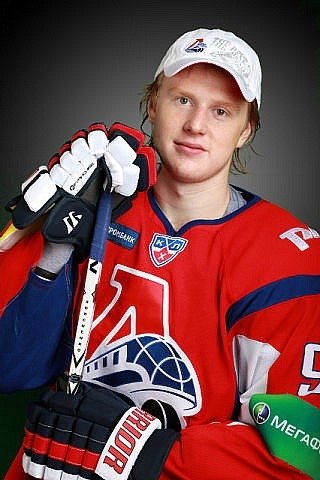 In his first season (2007-08) with Lokomotiv’s junior farm team, Lokomotiv-2, 16-year old Daniil registered 13 points on six goals and seven assists in 22 games. Furthermore, Daniil skated for Russia at the 2007 U17 World Hockey Challenge, where he registered four points on three goals and one assist in four games.
In his first season (2007-08) with Lokomotiv’s junior farm team, Lokomotiv-2, 16-year old Daniil registered 13 points on six goals and seven assists in 22 games. Furthermore, Daniil skated for Russia at the 2007 U17 World Hockey Challenge, where he registered four points on three goals and one assist in four games.
The following season, 2008-09, Daniil torched the third tier league for 87 points on 44 goals and 43 assists to go along with 53 penalty minutes in 66 games.
Expected to become a star of the Russian Minor Hockey League (MHL), the relatively unknown playmaking center sent shock-waves throughout the Russian hockey realm when he earned a spot on Lokomotiv’s KHL team for the 2009-10 season after a solid preseason effort.
“I think there is nothing unexpected,” said Daniil. “Yes, it is quite possible that I could play in the MHL and show good results there, but you need to grow, progress and strive to play at the highest level. However, I am glad to play for our youth team and am ready to help them.”
In 35 games with Lokomotiv’s KHL team, Daniil registered six points on five goals and one assist, and had four assists in six games for Lokomotiv’s MHL team, Loko Yaroslavl.
The 2010-11 season saw Daniil split time between Lokomotiv’s KHL team, where he registered two points on one goal and one assist in 16 games, and Loko Yaroslavl, where he registered 20 points on 10 goals and 10 assists in 14 games. Daniil rejoined Lokomotiv for their KHL playoff run and had one assist and 16 penalty minutes in 11 games.
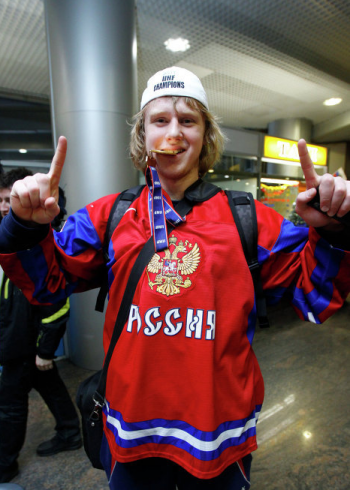 In addition to playing for both Lokomotiv teams during the 2010-11 season, Daniil was the captain of the Russian Selects squad that achieved their first series win over the Canadian Hockey League (CHL) All-Stars at the 2010 Subway Super Series, and helped Russia win the Gold medal at the 2011 World Junior Ice Hockey Championships.
In addition to playing for both Lokomotiv teams during the 2010-11 season, Daniil was the captain of the Russian Selects squad that achieved their first series win over the Canadian Hockey League (CHL) All-Stars at the 2010 Subway Super Series, and helped Russia win the Gold medal at the 2011 World Junior Ice Hockey Championships.
Having never made the Russian national junior team in past years due to conflicts with former head coach Vladimir Plyuschev, Daniil showcased his talents by registering seven points on four goals and three assists in seven games as he centered the top line alongside Maxim Kitsyn and Vladimir Tarasenko.
Though his skills wowed fans watching the World Junior Championships, the one moment Daniil was best remembered for was when he shouted, “MOM, I DID IT!” into the camera lens after the team’s victory over Canada in the gold medal game. In fact, Daniil didn’t take his medal or jersey off for several days following the win, to which some teammates joked Daniil was getting “star fever”. However, Daniil didn’t care. He felt on top of the world and was ready to conquer new challenges.
SUMMER 2011
As a result of being a key component to Russia’s gold medal team at the World Junior Championships, Daniil vaulted himself from unknown name to possible National Hockey League (NHL) draftee.
Liking his playmaking abilities, strong hockey IQ, work ethic, passing and skating game (both with and without the puck), the Sharks selected Daniil with the 166th overall pick in the sixth round of the 2011 NHL Entry Draft. A couple of weeks later, Daniil, who was the Sharks’ first draft pick from a Russian team since defenseman Andrei Zyuzin in 1996, was in San Jose for the Sharks’ rookie development camp.

“I had a whole schedule there,” Daniil said in Russian for a Sept. 2011 interview with Rosso for Hockeysfuture.com. “I had to get up at 6 AM as at 6:45 we had to go to the practices. There, we had both breakfast and lunch. And I would get back to the hotel only at 6 PM. We had two ice sessions a day, some gym, and two or three summits every day.
“The practices were varied, there was always something new. I learned many new things. And I also want to add that the organization here, it’s truly superior (to the KHL).”
While his hockey skills spoke volumes at Sharks development camp that week, Daniil told Rosso the English language was a hurdle he had to overcome. “It’s when you don’t understand everything they say, but it was a little bit better day after day. But I always managed to do all the drills, I also could look at what other players were doing. Summits were hard, I had to sit there and just listen for two to three hours per day.”
After Sharks development camp ended, Daniil returned home to Yaroslavl and began preparing for Lokomotiv’s 2011-12 KHL season opener against Dinamo Minsk.
THE CRASH
On Sept. 7, 2011, the Lokomotiv hockey team, coaching staff and several prospect players boarded a Soviet-era Yakovlev Yak-42 passenger aircraft from Yak-Service to travel to Minsk, the capital of Belarus, for their season opening game.
Unfortunately, tragedy struck as the plane ran off the near 3,000-meter runway, struck a tower mast about 500 meters from the end of the runway when trying to gain altitude from on the grass field and crashed into the banks of the Volga River about 1.2 miles from Tunoshna Airport.

Of the 45 people on the flight, 43 died at the scene. Lokomotiv forward Alexander Galimov was put into a medically induced coma after suffering burns on 80 percent of his body and died five days later. Only the flight mechanic, Alexander Sizov, who was also put into a medically induced coma, survived.
Among those who perished in the crash were Daniil, former NHL players Pavol Demitra, Ruslan Salei, Josef Vasicek, Karel Rachunek, Jan Marek, Alexander Vasyunov, Karlis Skrastins, Stefan Liv, and coaches Brad McCrimmon, Alexander Karpovtsev, and Igor Korolev.
There were a handful of factors that contributed to the crash, all of which were chronicled in the investigation report that was released two months after the crash, and highlighted in a Jan. 2013 Mayday, aka Air Crash Investigation, documentary on the National Geographic channel.
While First Office Igor Zhevelov, who was the Senior Vice President of Flight Operations for Yak-Service, and Captain Andrei Solomentsev, who was a close friend of Zhevelov, had thousands of hours of flight experience, the duo weren’t properly trained to fly the Yak-42 aircraft as Zhevelov had not completed his Yak-42 training program and Solomentsev was using falsified documents.
Records showed Zhevelov logged 12,879 hours flying Yak-40’s compared to 613 hours flying Yak-42’s, and Solomentsev logged 4,692 hours flying Yak-40’s compared to 1,525 hours flying Yak-42’s. In addition, Zhivelov pulled rank so he could fly with his “hockey heroes.”

The plane had more than enough speed to ascend properly at the 1200-meters mark on the runway but it was discovered Zhevelov kept his foot on the brake without realizing it (the Yak-40 airplanes brake design cupped the entire foot whereas the Yak-42 airplanes brake design allowed the heel to rest on the floor). Zhevelov’s medical records revealed he had secretly been treated for a nerve condition called Polyneuropathy, a neurological disorder that affects the body’s extremities and causes weakness along with loss of sensation.
When the plane ran off the runway at 220 kph (136.7 mph), captain Solomentsev moved the controls to abort the takeoff. Upon seeing this action, flight engineer Vladimir Matyushin, who was the third man in the cockpit, decreased engine power by putting the engines in neutral. However, Zhevelov disagreed and Solomentsev reversed his decision, ordering Matyushin to put the engines up to full power for a takeoff attempt.
“Had they rejected takeoff three-to-five seconds after attempting to rotate, they would’ve still stopped on the clearway and everybody would’ve just walked away,” said JAKA-42 pilot Wiktor Jermolajew in the documentary.
In the wake of the crash, Yak-Service had their license revoked by Russia’s Federal Air Transport Agency, aka Rosaviatsia, and went out of business shortly thereafter. Furthermore, the airlines former vice president, Vadim Timofeev, was charged in connection with the crash one-year later for allowing the unqualified crew to illegally fly the Yak-42 instead of having the crew attend their scheduled re-education sessions to gain the proper permits to fly a Yak-42.
REACTIONS
 With tears trickling down their cheeks, hockey fans and players around the world took to social media to send their thoughts, prayers and condolences to those who had just lost a loved one.
With tears trickling down their cheeks, hockey fans and players around the world took to social media to send their thoughts, prayers and condolences to those who had just lost a loved one.
Members of the Sharks organization recalled Daniil’s time in San Jose as he left a lasting impression with those he had came in contact with.
“Daniil attended our development camp this past July and everyone on our staff agreed that he had a bright future with our organization,” said Sharks Executive Vice President and General Manager Doug Wilson in a statement on the Sharks website in the hours after the plane crash. “He was an amazing person with a fun-loving personality and his attitude and energy during his time in San Jose was infectious.”
“For him, it took a lot of courage to come here as a young player and basically speak no English,” said Sharks head coach Todd McLellan of Daniil to the Mercury News’ David Pollak the day of the crash. “But he fit in really well. He had an energy about him. We really liked him as a player. We had actually hoped he would commit to playing in Worcester this year.”
Sharks forward Tommy Wingels, who was Daniil’s roommate during development camp, revealed to Pollak that the Sharks’ scouting staff and Daniil’s girlfriend, whom Daniil spoke to via Skype, were pushing Daniil to learn English.
“At times, it was tough for him to understand some of the coaching points, but talent-wise, he was one of the best,” said Wingels to Pollak. “He skated well, he could shoot the puck.”
Over in Minsk, the game’s organizers arranged a requiem mass at Minsk-Arena the following night (Sept. 8, 2011) in one of the most respectful and classiest tributes in sports history.
Though tickets had been sold long in advance of the game, not one ticket holder asked for a refund as the ceremony was held inside a packed Minsk-Arena full of mourning fans, each of whom had brought flowers. Also in attendance was the entire Belarusian leadership, including President Alexander Lukashenko.

With the orchestra’s voice filling the arena, the Dinamo Minsk players skated onto the ice, individually took a knee behind one of the 37 large portraits of the deceased Lokomotiv players and staff, and proceeded to guide the puck at each portrait into their own net to symbolize a defeat to Lokomotiv. At the other end of the ice, members of the Belarusian national hockey team laid flowers inside the goal crease in Lokomotiv’s memory.
As family, friends and significant others did their best to cope with the loss of their loved ones, Daniil’s younger brother Ilya dealt with the tragedy in his own way that was highlighted on a translated tumblr posting by user “aether-wings“:
“The younger brother of Daniil Sobchenko, 6-year old Ilya, took the incident in his own way, much as a child. He knows that his beloved Daniil was killed, as I know my brother is still out there. A few days ago, he promised his mother and father that when he gets older, he will be a champion, like his Dan. To hold off injury to the psyche of the small boy, the parents told him that Daniil is now among the stars in the sky, to watch over them all.
Yesterday, Ilya went to the balcony and asked me to show that star, who is now Daniil, – My mother Irina said ‘in a shaking voice’ – that the sky was dark and the stars could not be seen. Ilya leaned over to me to say ‘Mom, I want him to hug me again.’ because Dan was always very fond of him. He never came without gifts for the boy. He would never take him on the railway, only in a car. Only the best for his brother. Ilya once told me: ‘There is no Santa Claus, It’s all my brother!’
Now, Ilya’s favorite toy is an airplane, in which the child wrote ‘Yak-42’, and when he plays with it, he tries hard always to hold it tight, not to let it drop, not to let if fall.”

PHOTO CREDITS
bnp.by, fanzone.khl.ru, lokomotiv.info, ria.ru, sports.yahoo.com, sports.ru, yar.kp.ru, vk.com, yarreg.ru, yarsport.ru.

































